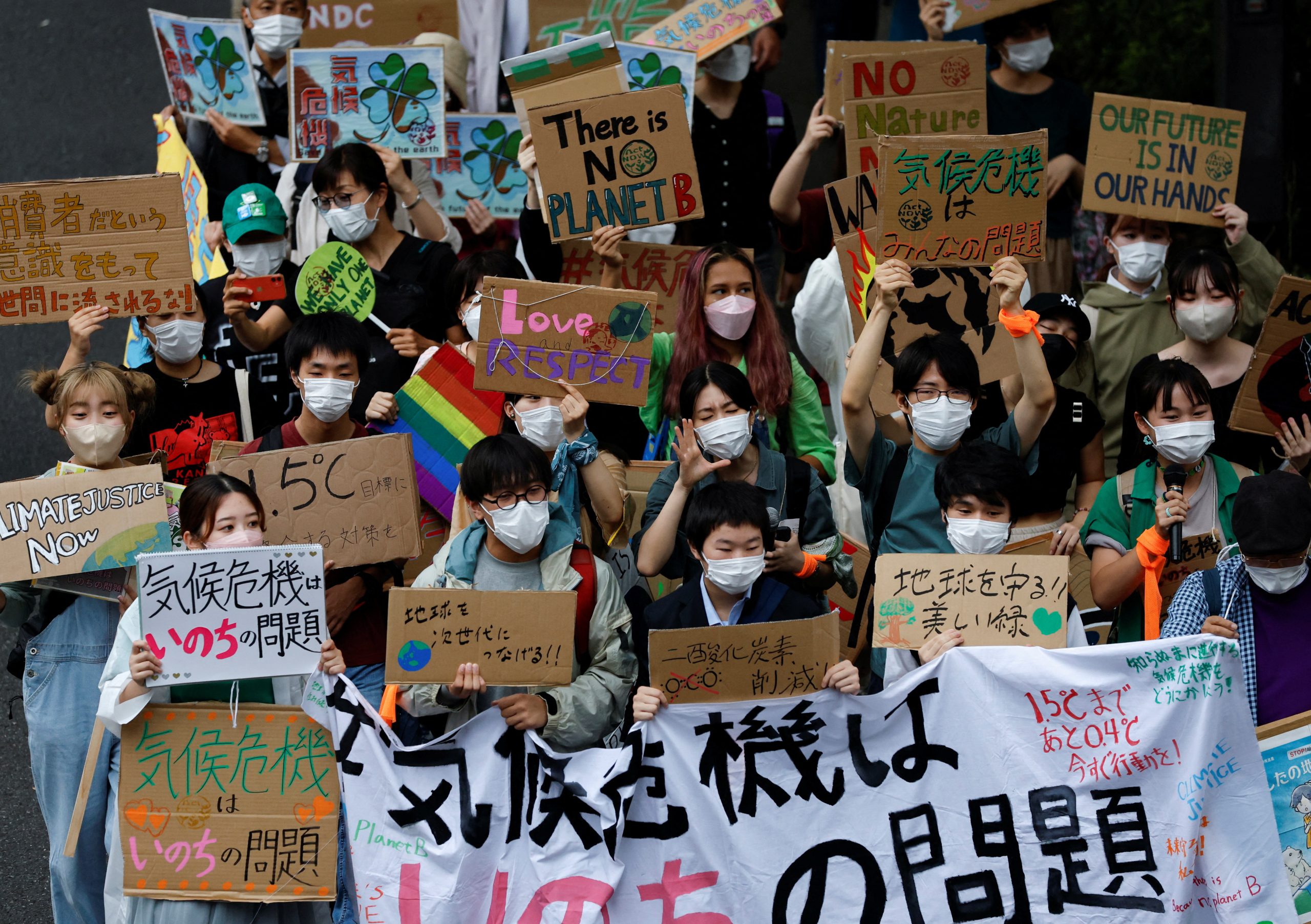Japan missed a UN deadline by submitting its new 2035 emissions reduction target a week late, reportedly because the government had received so many public comments on the 60% cut it proposed – and yet it made no changes in response to overwhelming calls to boost ambition.
The environment minister Keiichiro Asao justified the government’s decision not to strengthen its draft goal for 2035 after a month-long consultation period because arguments raised in the comments were already considered during the policy formulation phase.
“It is very disappointing that the Japanese government ultimately decided to proceed with a
low NDC target, despite claiming its NDC submission was delayed due to reviewing feedback,” said Yoko Mulholland, a senior policy advisor at think-tank E3G.
On February 18, the Japanese government sent in its updated Nationally Determined Contribution (NDC) to the UN, stating that it aims to reduce greenhouse gas emissions by 60% from 2013 levels by 2035 and by 73% by 2040, extending its 2030 goal of a 46% cut.
This was despite more than 80% of the 3,000-plus comments the government received calling for higher targets, as Reuters first reported. Japan’s government received criticism from green groups at home and internationally that the proposed targets were not in line with a global goal of keeping global warming to 1.5C.
To make an adequate and fair contribution, Japan should cut emissions at least 81% by 2035 below 2013 levels, according to recent analysis by Climate Action Tracker.
“Instead of heeding the people’s calls for a science-aligned 81% emissions reduction target, [Prime Minister] Ishiba bowed to pressure from fossil fuel interests,” Masayoshi Iyoda, a campaigner for 350.org Japan, said in a statement.
Return to nuclear power
The government of the world’s sixth largest greenhouse gas emitter also finalised its revised energy strategy alongside its NDC. It plans for renewables to account for 40-50% of the country’s electricity mix by fiscal year 2040, with nuclear power contributing another 20%.
The new strategy abandons a previous government stance of reducing dependence on nuclear power as far as possible, following the 2011 tsunami-related meltdown at the Fukushima No. 1 nuclear plant.
Japan’s domestic policies have wide-reaching consequences for the global energy transition.
Its energy strategy maintains an important role for fossil fuels, particularly liquefied natural gas (LNG), with energy demand projected to grow due to artificial intelligence (AI) data centres and new manufacturing plants.
The prospect of Japan importing more LNG, meanwhile, is emboldening countries like the US to proceed with new LNG production, including hopes that it could kickstart a long-delayed $44 billion LNG project in the northern state of Alaska.
Iyoda said Japan’s new climate and energy policies place “false solutions, such as fossil gas, nuclear, ammonia-coal co-firing power, and carbon capture and storage (CCS) at the center of Japan’s climate action without a clear pathway to fossil fuel phaseout”.
Japan also has substantial influence in the Asia-Pacific through its investments in energy-related infrastructure.
The Asia Zero Emission Community, a multilateral forum initiated by former Prime Minister Fumio Kishida, is promoting a large number of fossil fuel-related investments across Southeast Asia, and his successor has clearly signalled that the Japanese government will continue to support similar investments under the AZEC framework for the next decade.
Ollie Wilson, head of the Climate Group’s RE100 campaign, said Japan was failing to “seize the opportunity in front of it to become a clean energy frontrunner”, urging it to double down on renewables and adding that its NDC – the fifth from a G20 nation – “falls far short of true climate leadership”.
A linear pathway
Back in 2020, Japan announced its current emissions reduction target of 46% by 2030 compared to 2013 levels, and net zero emissions by 2050.
With the initial UN deadline for 2035 NDCs looming in February this year – which was met by only a dozen countries and has now been extended to September – a committee of Japan’s economy and environment ministries hosted a series of monthly hearings with experts.
During its November 2024 meeting, the proposed new targets were unveiled. With a 60% emissions cut for 2035 and 73% for 2040, they are points on a straight-line trajectory to net zero by 2050.

Presenting the draft goals, an economy ministry official explained “it is crucial for our country to clearly demonstrate its commitment to net-zero emissions by 2050, even in the face of uncertainties in emission mitigation technologies and global economic and social conditions.”
The linear pathway, he added, would “enhance predictability in achieving emissions reductions and economic growth simultaneously”.
NDC not 1.5-aligned
When Japan’s environment minister Asao spoke at COP29 in December, he promised Japan would submit “an NDC that is ambitious and consistent with the 1.5 degree goal.”
But environmental groups have argued strongly that the goals Tokyo has set do not help put the world “on track” to limit warming to 1.5C.
The Renewable Energy Institute (REI), a Japanese research organisation, said in a column on the 2035 target, before it was confirmed, that the government was using a flawed interpretation of the IPCC’s latest Sixth Assessment Report. This concluded that global emissions must fall by 60% by 2035 from 2019 levels for a 50% chance of keeping warming to 1.5C.
But instead of using 2019 as a reference year, the government picked 2013 – the year “when the Fukushima Daiichi nuclear disaster led to zero reliance on nuclear power, increasing dependence on thermal power generation and causing a sharp rise in emissions”, according to REI.
Choosing 2013 as a baseline for its emissions cuts makes Japan’s climate track record look more impressive than it seems, the think-tank argued. Measured using the IPCC’s 2019 baseline and including natural absorption of carbon dioxide by ecosystems, the 2035 goal of 60% only achieves an actual reduction of about 49%, REI calculated.
“This level of ambition falls short of fulfilling Japan’s responsibilities as a developed nation,” the think-tank said, branding it a “missed opportunity”.





